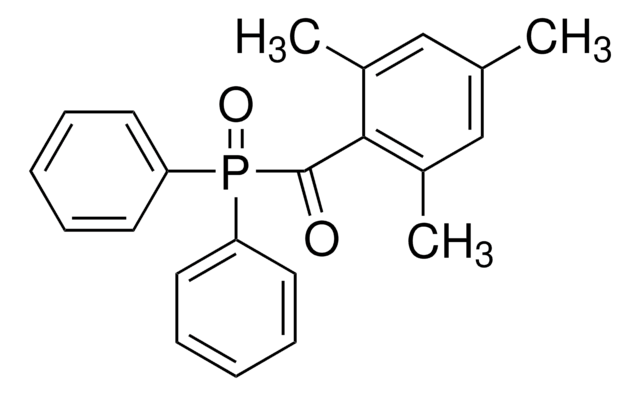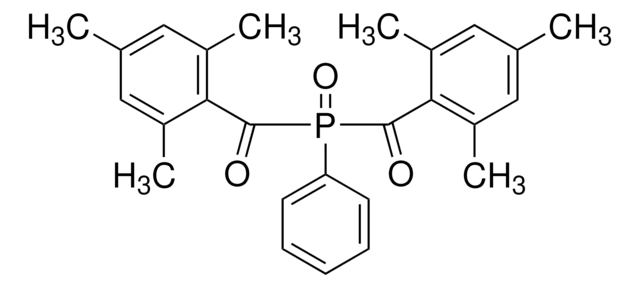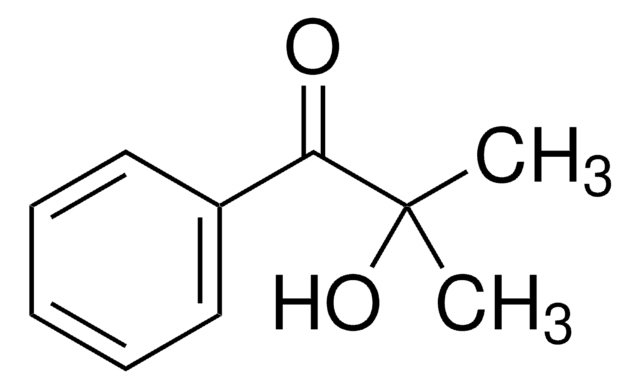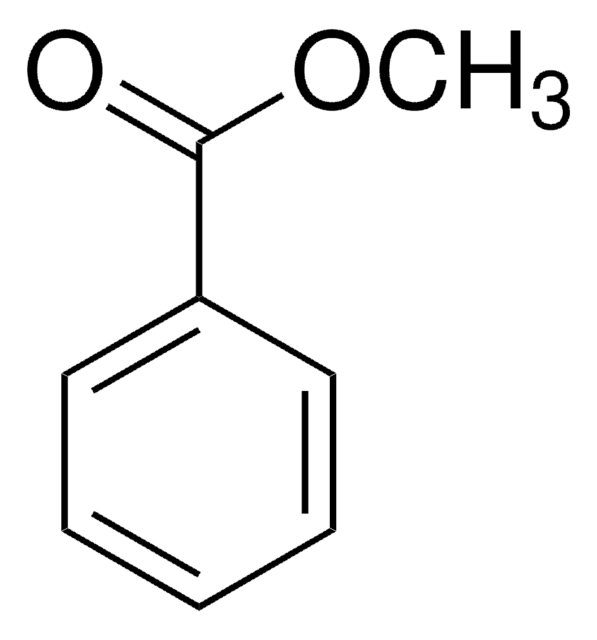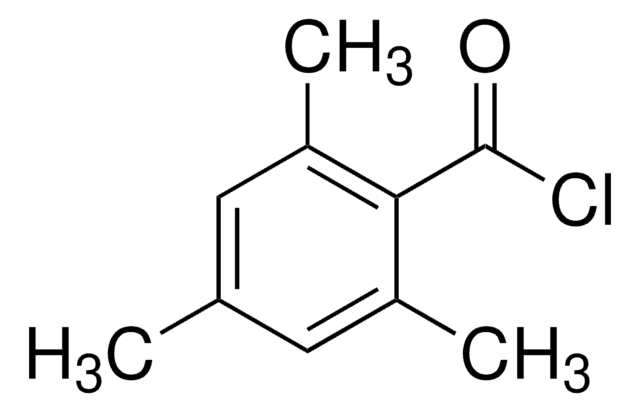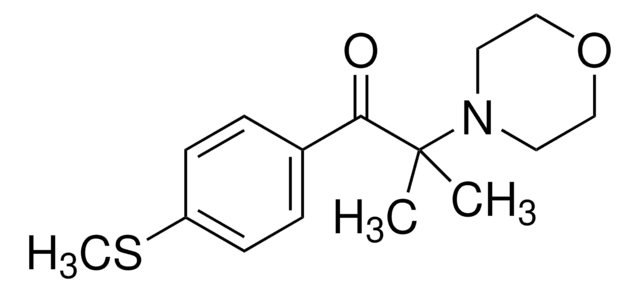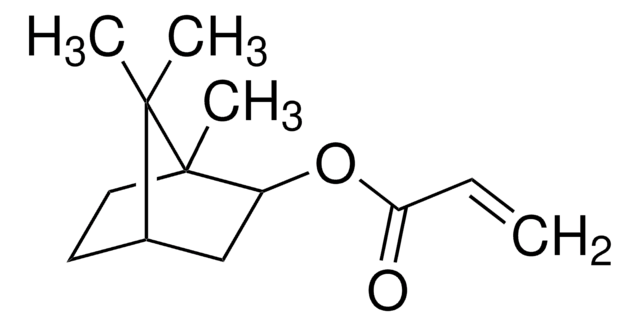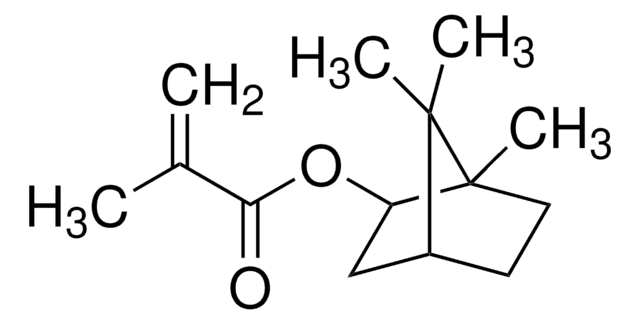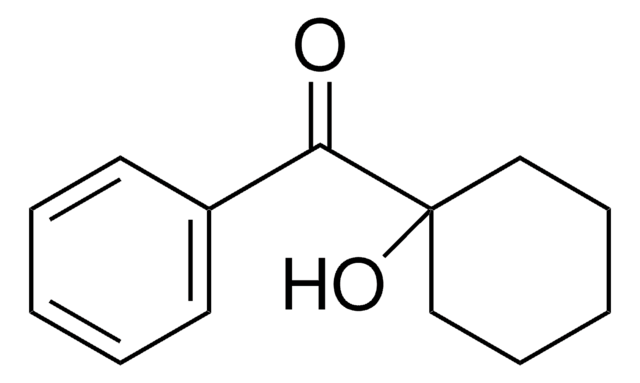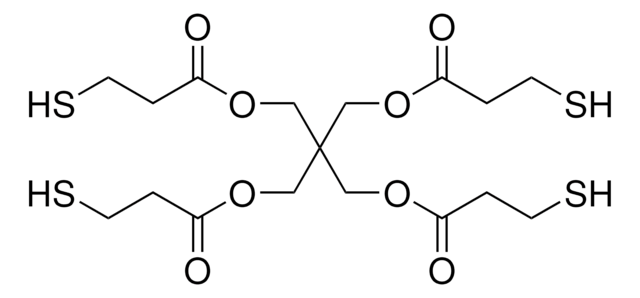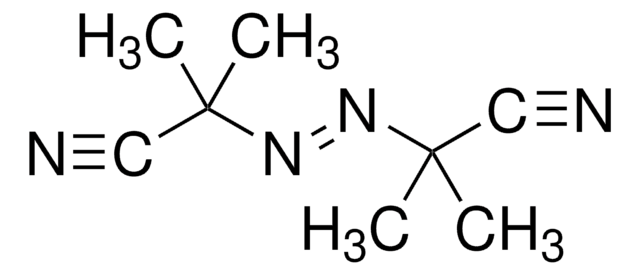906816
Water-soluble TPO based nanoparticle photoinitiator
contains nonionic surfactant
Synonyme(s) :
Diphenyl(2,4,6-trimethylbenzoyl)phosphine oxide, TPO
About This Item
Produits recommandés
Forme
powder or solid
Couleur
white to off-white
Chaîne SMILES
O=P(C1=CC=CC=C1)(C(C2=C(C)C=C(C)C=C2C)=O)C3=CC=CC=C3
Vous recherchez des produits similaires ? Visite Guide de comparaison des produits
Catégories apparentées
Application
The extinction coefficient of the new water-dispersible nanoparticles of TPO is more than 300 times larger than the best and most used commercially available water-soluble photoinitiator, Irgacure 2959. The TPO nanoparticles absorb significantly in the range from 385 to 420 nm, making them suitable for use in commercially available, low-cost, light-emitting diode-based 3D printers and UV-curing devices.
Mention d'avertissement
Warning
Mentions de danger
Conseils de prudence
Classification des risques
Aquatic Chronic 3 - Repr. 2 - Skin Sens. 1
Code de la classe de stockage
11 - Combustible Solids
Classe de danger pour l'eau (WGK)
WGK 2
Listes réglementaires
Les listes réglementaires sont principalement fournies pour les produits chimiques. Seules des informations limitées peuvent être fournies ici pour les produits non chimiques. L'absence d'indication signifie qu'aucun des composants n'est répertorié. Il incombe à l'utilisateur de s'assurer de l'utilisation sûre et légale du produit.
EU REACH SVHC Candidate List
Faites votre choix parmi les versions les plus récentes :
Certificats d'analyse (COA)
Vous ne trouvez pas la bonne version ?
Si vous avez besoin d'une version particulière, vous pouvez rechercher un certificat spécifique par le numéro de lot.
Déjà en possession de ce produit ?
Retrouvez la documentation relative aux produits que vous avez récemment achetés dans la Bibliothèque de documents.
Les clients ont également consulté
Articles
The introduction of LAP and water-dispersible photoinitiator nanoparticles of TPO, enables the development of novel formulations for 3D bioprinting, tissue engineering applications, and device manufacturing.
Contenu apparenté
L'ingénierie tissulaire permet de fabriquer des cultures de tissus à partir de supports, de cellules vivantes et de molécules biologiquement actives en simulant le microenvironnement de l'organisme pour réparer ou remplacer un tissu endommagé.
Tissue engineering fabricates tissues cultures from scaffolds, living cells, and biologically active molecules by simulating the microenvironment of the body to repair or replace damaged tissue.
Notre équipe de scientifiques dispose d'une expérience dans tous les secteurs de la recherche, notamment en sciences de la vie, science des matériaux, synthèse chimique, chromatographie, analyse et dans de nombreux autres domaines..
Contacter notre Service technique
